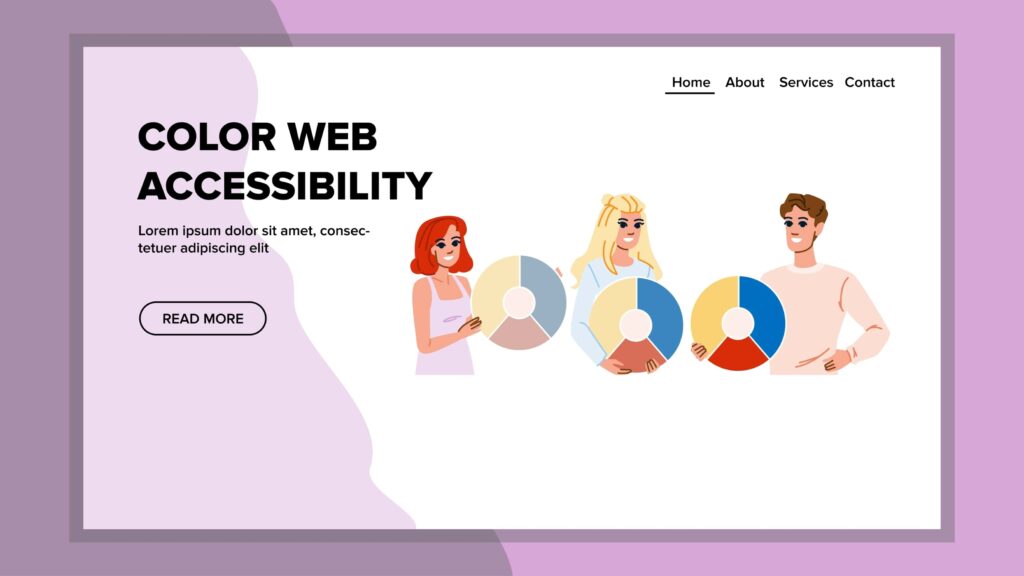One of the most critical aspects of digital accessibility is website accessibility remediation.
Website accessibility remediation ensures compliance with the Americans with Disabilities Act (ADA) and the Web Content Accessibility Guidelines WCAG, which establish a legal framework for specific physical and digital content features to assist people with disabilities, from larger text to compatibility with assistive technology like screen readers. All of this is to promote inclusivity and equal access for all.
Keep reading to learn more about website accessibility remediation, including what it is, best practices with content accessibility guidelines, and everyday website accessibility issues to avoid the plague.
Let’s Talk About WCAG, ADA, and Other Accessibility Standards
With accessibility, arguably, two of the most essential concepts to know are the WCAG and the Americans with Disabilities Act (ADA). Both of these work in tandem to establish a legal framework for website best practices and prevent discrimination against individuals with disabilities across all aspects of the public realm.
Here’s a brief overview of what WCAG and ADA entail.

Web Content Accessibility Guidelines (WCAG)
The WCAG establishes best practices for equipping websites with accessibility-friendly features and for web and document remediation (e.g., Microsoft Office files) based on its four fundamental principles: Perceivable, Operable, Understandable, and Robust.
Each of these principles is part of a larger framework around creating web content. Perceivable speaks to text alternatives for non-text content/adding captions, whereas Operable cites improvements like keyboard accessibility.
In turn, Understandable focuses on how information is shared. At the same time, Robust asks that different user groups and tools, including third-party assisted devices like screen readers, can interpret any web accessibility improvements.
Americans with Disabilities Act (ADA)
The Americans with Disabilities Act is arguably the most important legislation regarding the rights of individuals with disabilities in the United States and accessibility remediation services provisions.
Enacted in 1990, it ensures that all individuals with disabilities have equal and fair access to public and private places under the law. All accounts are fair game, from bus shelters to multimillion-dollar e-commerce retailers like Amazon and Walmart.
Common Accessibility Issues on Websites
Here are five of the most common web accessibility remediation issues on websites:
Keyboard Navigation Problems
Any accessibility remediation effort is not complete with keyboard navigation. Sometimes, individuals with mobility impairments have difficulty using the keyboard to engage with interactive elements or rely on visible focus indicators. In this accessibility area, in-house team web developers assist in ensuring all interactive elements on the web page can be accessed via keyboard, benefiting those with limited mobility.
Image Alt Text and Descriptions
For assistive technologies like screen readers to accurately portray content, websites need to use image alternative text, which accurately describes the contents of an image with descriptive context. Not only do images need to be tagged, but decorative images and detailed complex imagery so that screen readers can do the job accordingly. Accessibility overlays like Accessibly do an excellent job of this.
Color Contrast Issues
If there is insufficient color contrast between text and background, the colorblind and others with visual impairments may find it difficult to discern content. Small font sizes and nearly illegible reading lines could only generate more confusion. Luckily, website accessibility widgets like Accessibly facilitate the accessibility remediation process, including color and contrast adjustments.
Form Field Accessibility
Another area that website accessibility emphasizes is form fields. Always ensure proper labeling of all forms and do not introduce placeholder text that the visually impaired might mistake for a label. In addition, error messages and other sign language should also be articulated, limiting the use of color wherever possible.
Video and Audio Captions/Transcripts
The visually and hearing impaired could benefit from video and audio captioning, which is synchronized with the audio to provide full transcripts of all content. Users can even search through other digital content like transcripts to find the necessary information.
Let’s Talk About Accessibly
One of the best ways to enjoy website accessibility remediation is with accessibility remediation services like Accessibly.
The Accessibly app is one of the leading web accessibility compliance widgets. It allows website owners and developers to instantly increase existing website ADA and WCAG compliance by introducing a simple snippet of code that can be hardcoded onto any website (with the option for native integrations with select platforms like WordPress and Shopify).
Features accessible offers include but are not limited to text-to-voice capability, quick installation, additional reading lines, tooltips, larger text, and the ability to adjust brightness, contrast, and grayscale on any webpage. When it comes to accessible design vs inclusive design, all of these features are easily integrated.
If you want to get started on the road to WCAG 2.1, ADA, Section 508, and EN 301549 compliance and understand the importance of accessible websites, enjoy your free 7-day trial of Accessibly with instant access to all features before committing to a monthly subscription. Just don’t forget about ongoing monitoring!
Get started with website accessibility remediation and the latest accessibility standards today!





